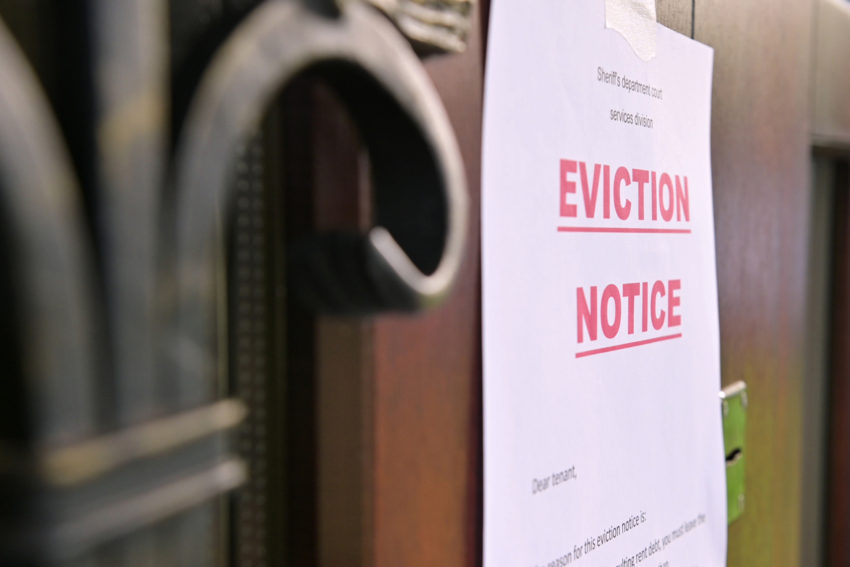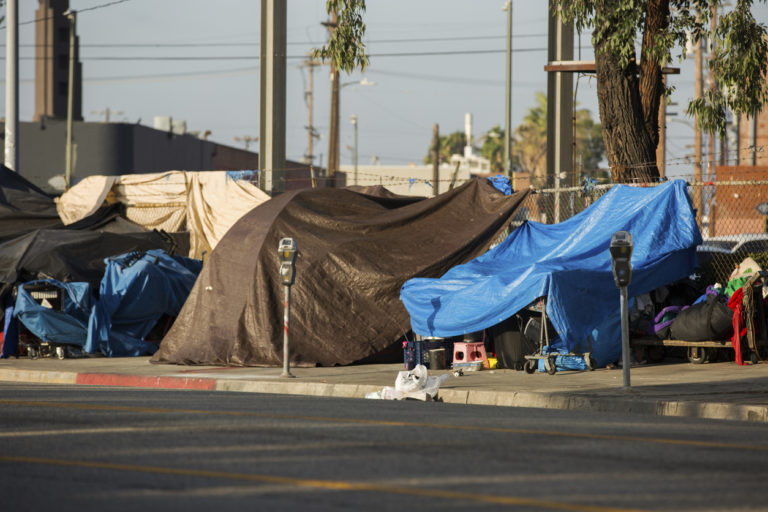
Share On Social!
After a federal moratorium on evictions put in place by the CDC last fall expired on July 31, 2021, the CDC has issued a new two-month moratorium through Oct. 3, 2021.
This new moratorium will extend protections for the millions of families behind on rent due to the economic fallout of the pandemic, particularly Latino and Black families, who have been hit the hardest.
Update 11/15/21: The Supreme Court ruled on August 26 to end the temporary stay on a lower court ruling seeking to overturn the CDC’s federal eviction moratorium. “In doing so, the Supreme Court’s ruling invalidates the federal eviction moratorium, eliminating vital eviction protections that have kept millions of households – predominantly people of color – stably housed,” according to the National Low Income Housing Coalition. Cities and states are currently working to protect tenants.
Let’s learn what exactly the moratorium means, what your rights as a renter are, and what happens next.
What is the Moratorium on Evictions?
A moratorium by law is defined as a period of time when people in debt can pause payment.
In September 2020, the CDC declared a temporary moratorium on evictions to help curb the spread of COVID-19.
The reasoning was that several months into the pandemic, the economy had tanked and people were falling behind on rent. By halting evictions due to unpaid rent, the CDC reasoned that it would keep people at home, off the streets, not spreading COVID-19.
The original moratorium was set to expire at the end of 2020.
Since then, it’s been extended several times.
President Joe Biden’s executive order instructed the CDC to extend the moratorium through March 31, 2021. He then extended it again until June 30, 2021, and then again until July 31, 2021, when it expired.
The initial moratorium finally expired due to a Supreme Court ruling in June 2021 that prevented Biden from being extended again. Biden urged Congress to pass a law to extend the moratorium, but Congress was unable to reach an agreement in time before the extension expired.
On Aug. 3, 2021, the CDC issued a new moratorium for the next two months to combat the increase of COVID cases, particularly in areas where the delta variant is spreading rapidly.
“Where we are right now with such high disease rates, we felt a new, tailored order [was needed] to make sure that … working Americans who were at risk of eviction could be stably housed during this really tenuous, challenging period of time,” said Dr. Rochelle Walensky, the CDC’s director, according to NPR.
It’s important to note that the moratorium only protected renters from being evicted due to unpaid rent and that renters could still have been evicted for other reasons. Renters also still owe the unpaid rent.
Now the moratorium ended Aug. 26, 2021.
However, states and cities are working to keep families protected from eviction, according to a Nov. 12, 2021, CNBC report.
Who is Most Affected by an Expired Moratorium?
Lawmakers feared that with an expired moratorium, millions of families behind on rent are at risk of being evicted.
Unfortunately, these renters are predominately low income, Latino and Black families.
The Center on Budget and Policy Priorities (CBPP) estimates that Latino renters are 1.5 times as likely as white renters to be behind on rent.
“An estimated 11.4 million adults living in rental housing — 16 percent of adult renters — were not caught up on rent, according to data collected June 23–July 5. Here, too, renters of color were more likely to report that their household was not caught up on rent: 24 percent of Black renters, 18 percent of Latino renters, and 18 percent of Asian renters said they were not caught up on rent, compared to 11 percent of white renters,” according to a CBPP report.

This disparity is reflective of the economic toll that families of color have faced during the pandemic, which stems from historical inequities and structural racism.
Many Latinos lost their jobs at the height of the pandemic, with some estimates saying up to 65%.
Latino families are also more likely to live in poverty than white families.
“Child poverty rates are more than twice as high for Latino children than White children (23.7% vs 8.9%). Poverty’s material hardships ─ difficulty meeting basic food, medical, housing, and transportation needs ─ lead to worse health and life outcomes,” according to a Salud America! research review.
What Can Be Done?
While evictions will be halted for at least two months, it’s important for renters to know their rights in case landlords are threatening eviction.
The National Low Income Housing Coalition (NLIHC) has recommendations if you’re a renter facing eviction.
“To be protected, qualified renters facing eviction should immediately provide a signed declaration to their landlords. For more details about the moratorium and a sample declaration that renters can use, read NLIHC’s and NHLP’s Overview of National Eviction Moratorium and our National Eviction Moratorium: FAQ for Renters [Español],” according to the NLIHC’s report on the national moratorium.
Learn about your rights as a renter and see what assistance you qualify for with resources from the Consumer Financial Protection Bureau.
What Happens Next?
Due to the Supreme Court ruling in June, the new moratorium may face legal challenges from opponents.
“In June, the Supreme Court decided in a 5-4 decision to allow the eviction ban to continue through the end of July. One of the justices voting in the majority, Justice Brett Kavanaugh, made clear that he would block any additional extensions unless there was ‘clear and specific congressional authorization,” according to CBS News.
The Biden administration hopes that at the very least, the CDC’s two-month extended moratorium will buy states time to distribute their rental assistance aid.
Even before the CDC’s move, several states were doing their own extensions or adding rules.
New Jersey extended bans on evictions through January 2022.
Had there been no CDC extension, Oregon renters would have had until February 2022 to make up missed rent payments from April 2020 to June 2021. They could not be evicted for rent owed during that time. In Washington state, landlords could not evict tenants based on rent owned from February 2020 to July 31, 2021.
Still, advocates are glad that the CDC’s last-minute moratorium will help those in need.
“This is a tremendous relief for millions of people who were on the cusp of losing their homes and, with them, their ability to stay safe during the pandemic,” said Diane Yentel, president of the National Low Income Housing Coalition, according to The Washington Post.
How Can You Get Involved to Improve Health Equity in Housing and More?
We can make a difference on the local level by seeing how the housing in our counties affect our neighbors.
Download a Salud America! Health Equity Report Card.
The report card will show you how you will see how people in your county are experiencing cost-burdened housing, substandard housing, mortgage lending, and more. The data is compared to the rest of your state and nation with maps and gauges.
Email your Health Equity Report Card to community leaders and share it on social media. Use it to make the case to address housing issues in the parts of your area where help is needed most!
Get your Health Equity Report Card!
Explore More:
Understanding & Reducing PovertyBy The Numbers
23.7
percent
of Latino children are living in poverty



